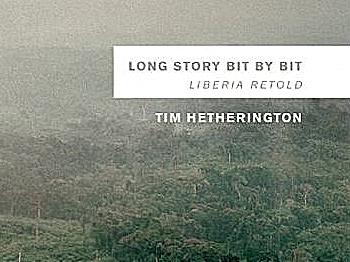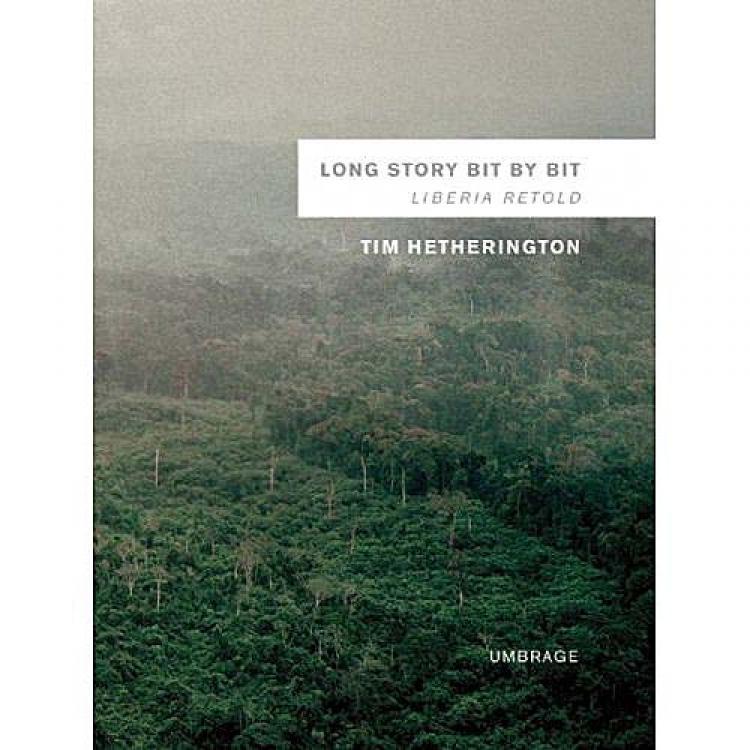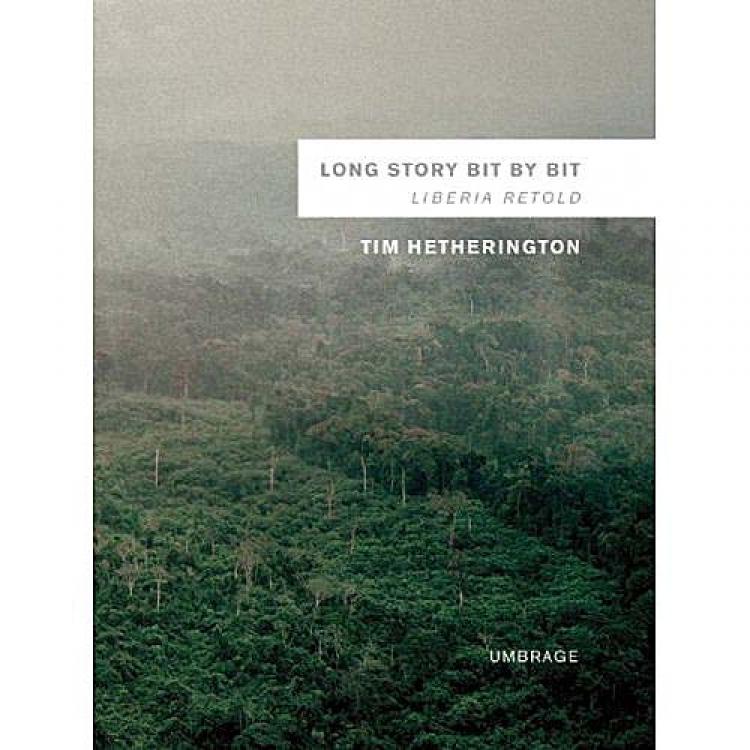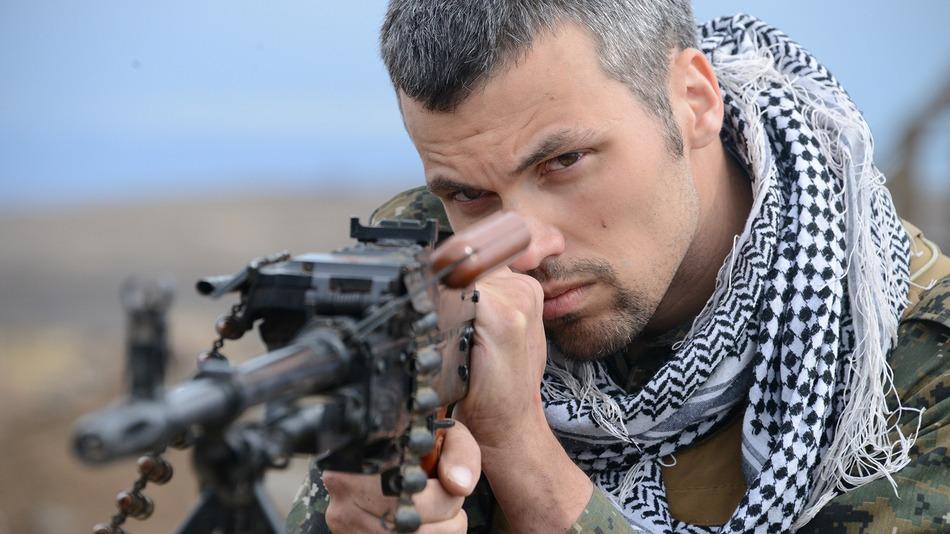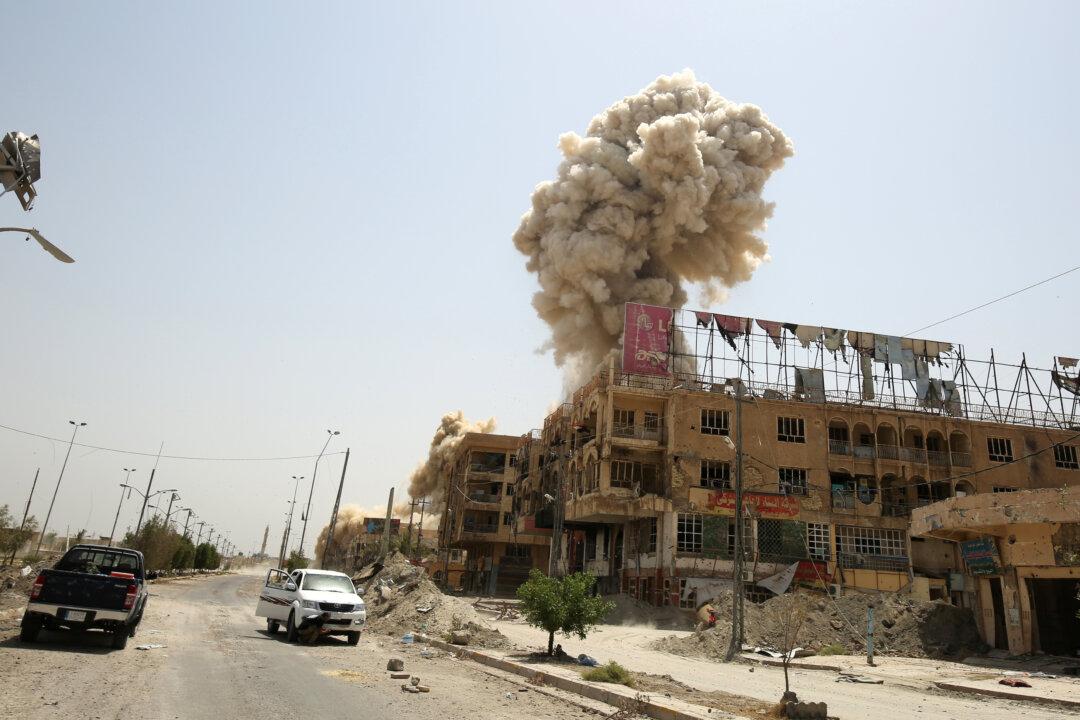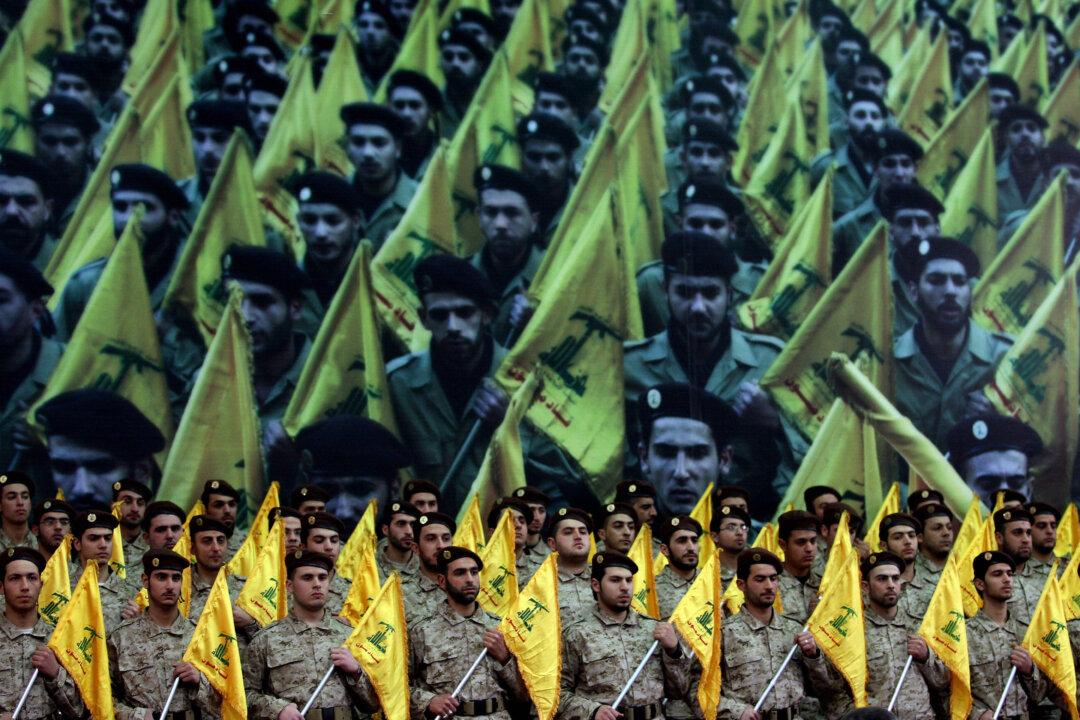Journalist Tim Hetherington, who took photographs, conducted interviews, and wrote cross-referenced captions for each photo, worked hard for every inch of the beautiful hard-bound volume. He lived behind rebel lines in the African country of Liberia during its civil war there in 2003, returning to document changes there through 2008.
His photographs, all taken on film (not digitally), sweep across the wide pages with an eerie sense of darkness, an effect that Hetherington is keenly aware of. But he felt it naturally came about because of the subject matter.
“That’s what I like about photography—part of it is almost inexplicable,” says Mr. Hetherington. “There’s a magic to it, which I kind of like. I like that bit that we can’t quite explain. We just know, does it move us or not, is it interesting?”
Hetherington is a philosophical character, and it comes through in the nature of his work. Originally from London but now based in New York City, he instinctively looks at issues from a variety of standpoints and on multiple levels.
A key example of this is two images that don’t seem to be connected, but share an underlying thread of relevance. The book starts with the close-up image of an eye, and ends with a photo of a rotting orange. They were Hetherington’s last photos taken in Liberia in 2008.
“That says a lot, that those are my last images I made in Liberia, because they’re working on a completely different level to the other images [in the book],” says Mr. Hetherington. “They’re both beguiling images—very simple. I think there’s something very strong about them in the context of other pictures.” He adds that the orange was a bit like Liberia by the end of the war—rotting from the inside.

